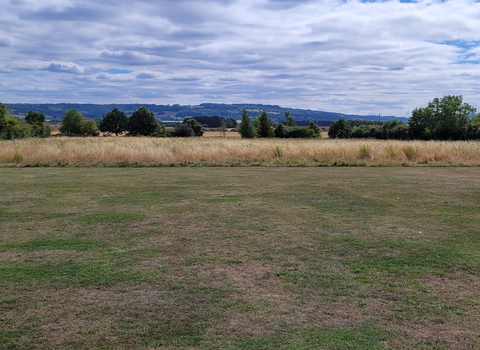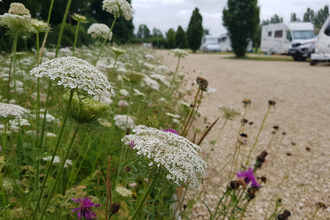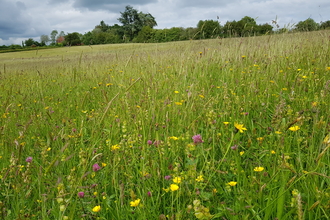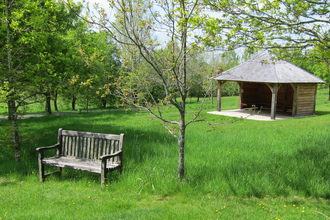The Leys playing field is situated at the southern edge of the village of Honeybourne, near Evesham. The main habitats on-site prior to any enhancement work were an unmanaged, tall grassland on the southern half of the field with closely mown grass to the north; hedgerows marking the eastern and western boundary; the Littleton, Broadway and Badsey Brook (a Local Wildlife Site) running along the southern boundary, young trees to the south of the site planted as part of the Millennium celebrations around the year 2000 and some ecologically valuable, mature oak trees along the western boundary.
Honeybourne Parish Council approached the Natural Networks team for advice on establishing a more diverse wildflower meadow to benefit wildlife and for the enjoyment of local people.
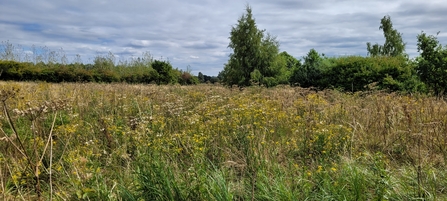
Meadow area, The Leys by Becca Bratt
Work began in early spring 2023 and involved an initial cut of the meadow area whereby cuttings were removed and the ground scarified in order to sow some UK native wildflower seeds in early April. This vegetation removal provided the lighter conditions needed for the existing cowslips, previously hidden by wilted or cut grasses, to put on a glorious, unexpected show.
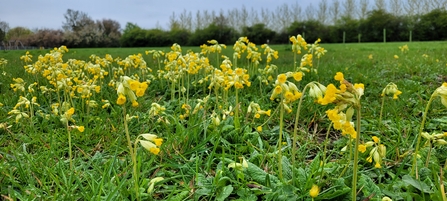
Cowslips by Becca Bratt
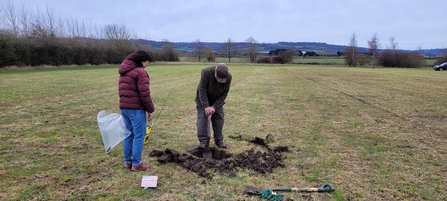
Tree planting by Becca Bratt
A corner of the site is now home to 10 fruit trees of local varieties, which will bear apples and plums for both people and wildlife. Once established they will also provide shade in hot weather. Beneath the canopy of the existing young trees to the south, shade tolerant bulbs including bluebells, wild garlic, snowdrops and wood anemones were planted with the help of local volunteers. Further botanical diversity was gained in wetter parts of the site by planting wildflowers such as betony, greater bird’s-foot trefoil, ragged robin and cuckooflower, all of which thrive in damp conditions.
Bird, bat and bee boxes were installed on the trees on site to provide additional roosting and nesting habitat for wildlife.
Natural Networks also provided advice regarding the future management of the site. The wildflower meadow will be cut in late summer to allow the later flowering species, such as devil’s-bit scabious to flower, set seed and return the following year. Cutting later also ensures that the meadow provides greater resources for wildlife, in terms of food and shelter, over a longer period. Ragwort is a native wildflower and is great for bees and other pollinators but can be toxic to livestock in large quantites. Because of the late cut, the hay will be unsuitable for livestock and so the abundance of ragwort in the meadow is not a problem. Wildflowers require low nutrient soil conditions to thrive, so the meadow cuttings will be removed and composted elsewhere to ensure that they do not enrich the soil.

